
Cuba is a jewel in the heart of the Caribbean. Whether for its history, its unique culture or the Caribbean beauty of its landscapes, Cuba resonates as a destination to be discovered. From bustling Havana to the paradisiacal beaches of Varadero, via Trinidad and Cienfuegos, Cuba offers a myriad of unforgettable experiences. The largest island in the West Indies delivers on all its promises and more. It offers unexpected experiences for those who leave the beaten track... In this article, we invite you to discover our 17 must-sees in Cuba.
1. Havana
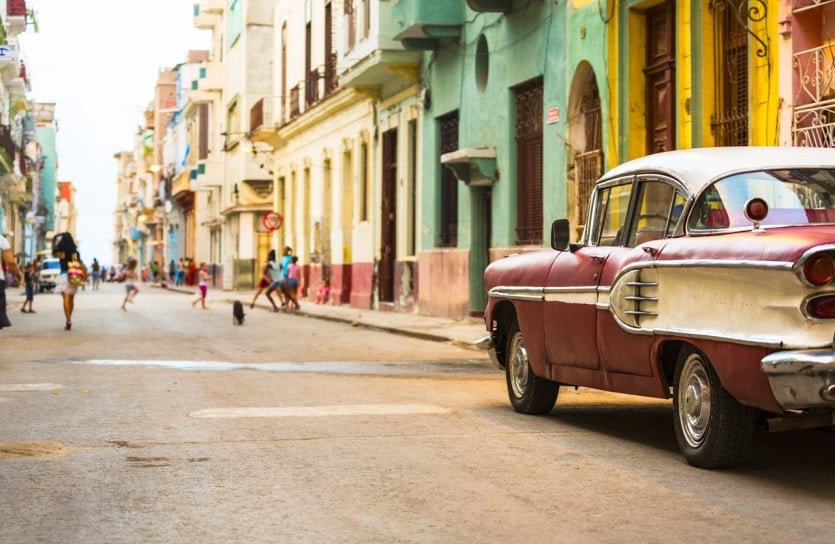
Havana© spot
Oldsmobiles from the 50s, colonial architecture on the facades, peaceful Cubans enjoying a cigar and music on every street corner: Havana fulfills every fantasy you can think of! Its historic center, a UNESCO World Heritage Site, is packed with architectural treasures, museums and churches that paint a picture-postcard picture. Don't miss a visit to the magnificent San Cristobal Cathedral, the site of the statue of Christ for a breathtaking view of the city, the galleries of Fort El Morro and the immense Paseo del Prado all the way to the famous Malecon , where habaneros meet at sunset...
The article to read our selection of 17 must-see things to do in Havana!
Would you like to go there? From July 1, 2025, the current system of tourist cards will be replaced by a mandatory E-Visa, specialized in the issuance of visas. In concrete terms, the tourist cards still available will only be valid until June 30, 2025. To find out more, read our dedicated article "Cuba: everything you need to know about the new entry rules".
2. Santiago de Cuba
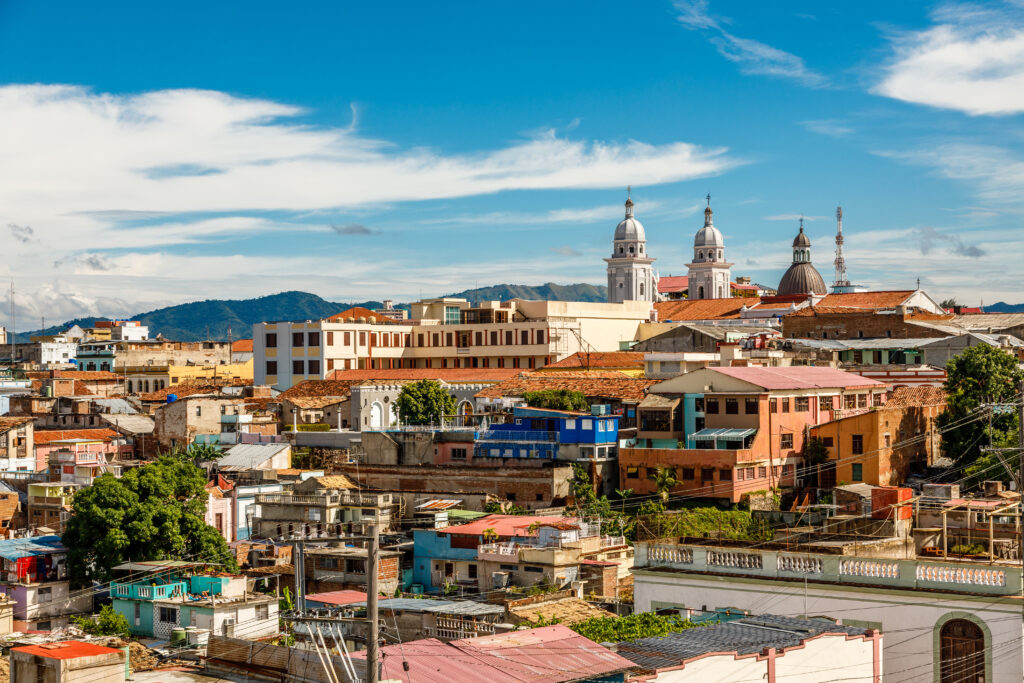
Cuba' s second-largest city and cradle of the Cuban revolution, Santiago de Cuba is a pleasant town nestled between the Caribbean Sea and the Sierra Maestra. The historic center is a great place to visit on the edge of these great plazas: the cathedral of Nuestra Señora de la Asuncion, the house of the city's founder Diego Velasquez, the Parque de Céspedes and the museums of carnival, rum and underground struggle... Just a stone's throw away is the Castillo del Morro, the best-preserved castle in the Caribbean. But your fondest memories will be of its famous carnival and the omnipresent music of this city, which vibrates to the rhythm of the mambo, rumba and cha-cha-cha!
3. Trinidad
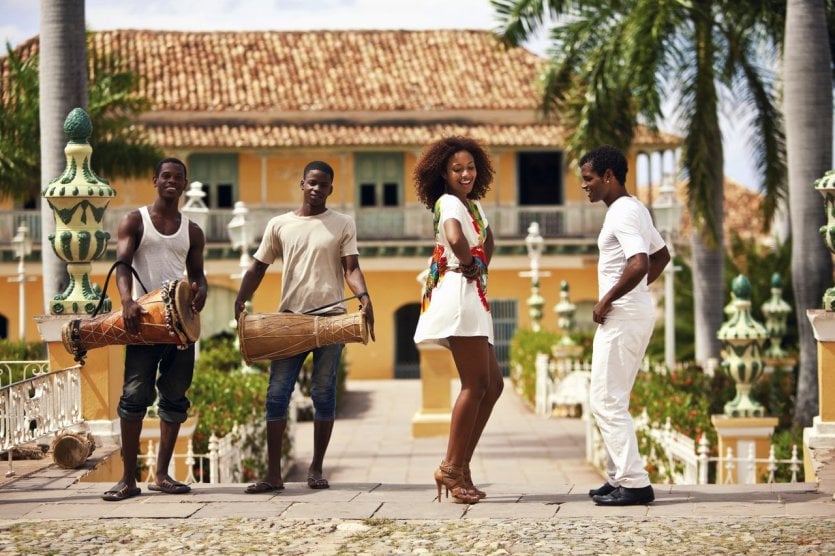
Trinidad© Necip Yanmaz - iStockphoto
Trinidad is considered by many to be Cuba's most beautiful city, a fact borne out by the fact that it is a UNESCO World Heritage Site! Time seems to have stood still in its cobbled streets, lined with colorful facades that create an old-fashioned decor. Among the many sights to visit are palaces, churches and museums, including the charming Museo Romantico. What's more, the Trinidad region boasts some of the most beautiful beaches in Cuba , with carpets of golden sand stretching for dozens of kilometers.
Read more cuba is one of the best destinations for music lovers.
4. Varadero

Varadero is Cuba's most important seaside resort. It is built on a 21-km stretch of beach in the paradise-like setting of the Caribbean. It's the ideal destination for lazing around or enjoying the pleasures of the sea: here, the water is turquoise and around 20°C. Diving, kite-surfing, catamaran sailing and deep-sea fishing are just some of the water sports on offer, but you can also practice your swing on one of the country's two golf courses or enjoy the lively nightlife.
5. Cienfuegos, one of Cuba's must-sees
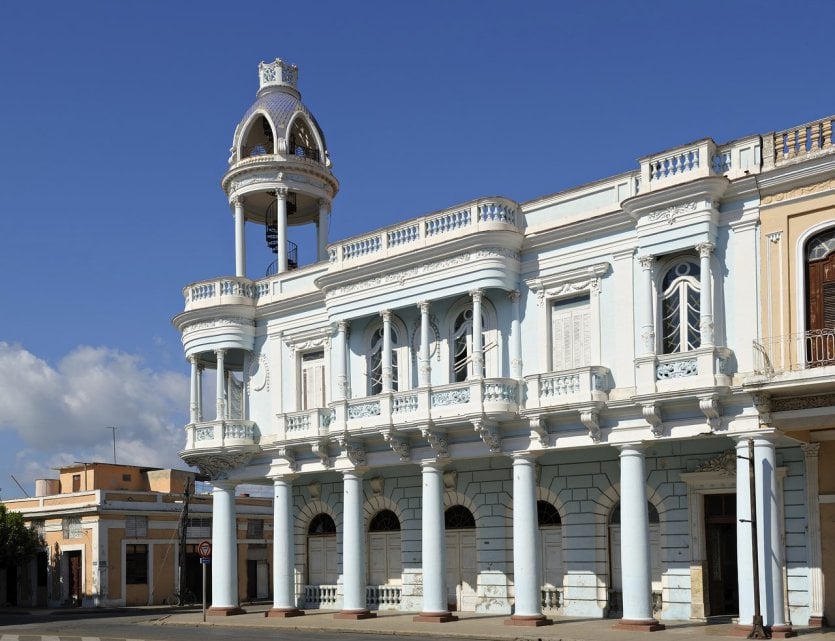
Cienfuegos© zoran1 - iStockphoto
Nicknamed the "Pearl of the South", Cienfuegos nestles on the shores of the country's most beautiful natural bay. Listed as a UNESCO World Heritage Site, the historic center is a real beauty. Admire its neoclassical buildings, wide, straight streets, parks and imposing edifices. Among them: the Founder's House, the Ferrer Palace, the Cathedral, the Tomás Terry Theatre, the former San Lorenzo College, the Casino Español... Beaches, the Botanical Gardens and restaurants - some of the best in the country - offer great alternatives to sightseeing.
6. Vinales Valley
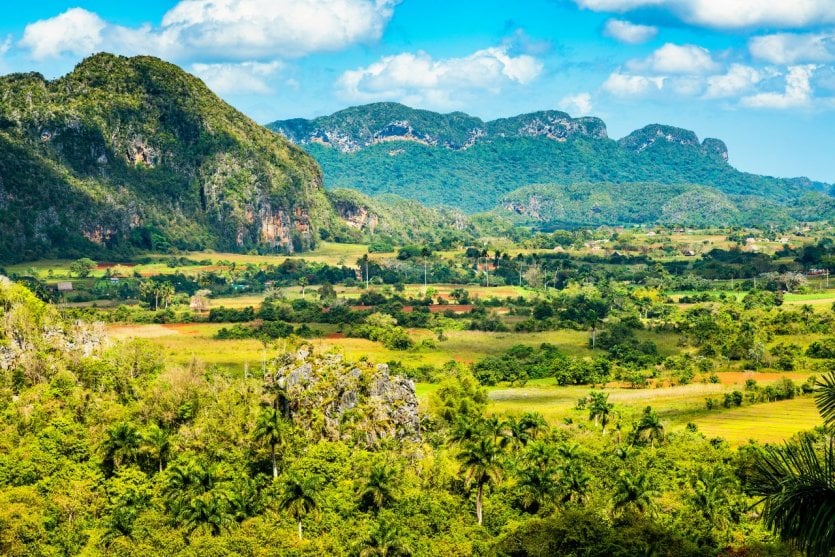
Vinales Valley© Mbbirdy
Well-known to cigar aficionados, the Vinales Valley produces one of the world's finest tobaccos: los puros. The landscape is partly sculpted by tobacco plants, but also by sugarcane plantations and mogotes, karstic reliefs inherited from the Jurassic period. This is a rural Cuba, protected by its national park and a UNESCO World Heritage site. Here, farming techniques remain traditional, life is simple and authentic, and so are the inhabitants.
7. Bay of Pigs
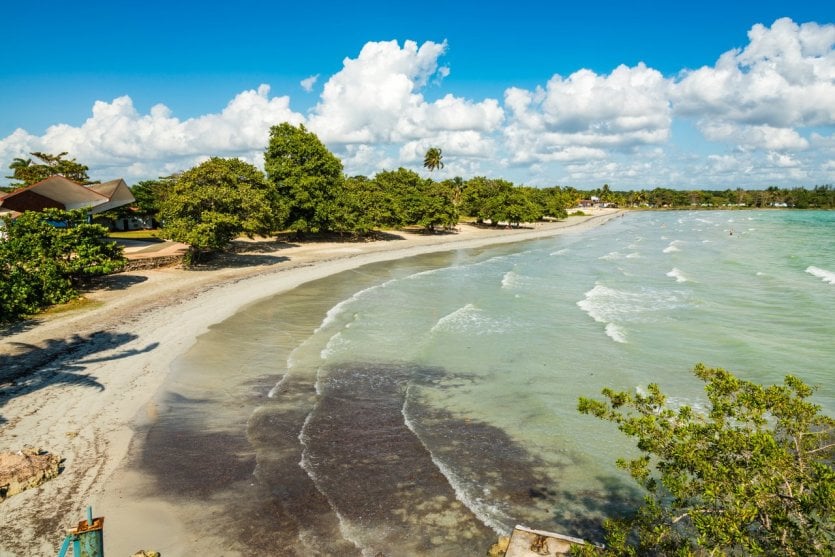
Bay of Pigs© Mbbirdy
Sadly famous, the Bay of Pigs has left history with memories of the attempted invasion by anti-Castro troops supported by the United States.... Today, it boasts Playa Giron and Playa Larga, two of Cuba's most beautiful beaches. What's more, it preserves one of the country's most important eco-systems and the largest wetland reserve in the insular Caribbean.
8. Cayo Coco & Cayo Largo
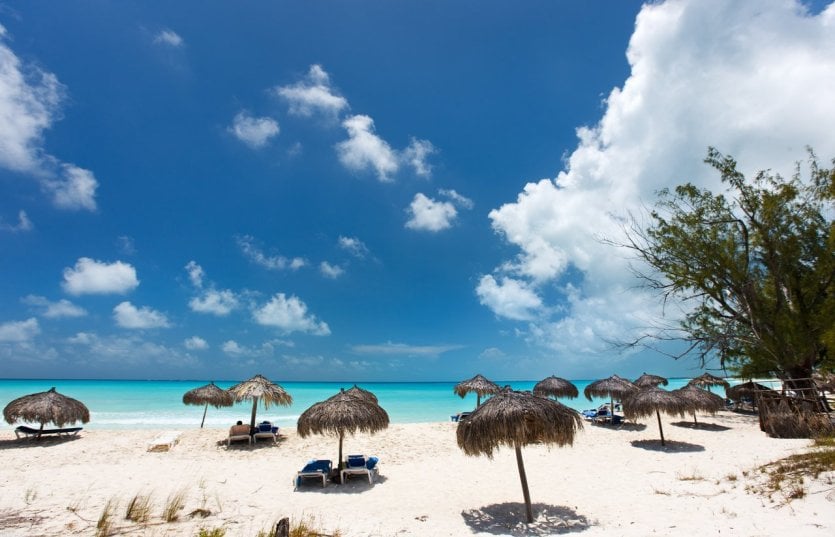
Cayo Coco & Cayo Largo© BlueOrange Studio - Shutterstock
Fine sandy beaches as far as the eye can see, translucent waters glistening in the sunlight and a magnificent seabed: Cuba has it all! If you're dreaming of paradise-like landscapes, you'll want to visit Cayo Coco or Cayo Largo. Cayo Largo is entirely resort-oriented, with luxurious beach resorts set at the foot of immense deserted beaches. Hundreds of turtles can be seen nesting on these magnificent shores in summer.
Read the article to discover our travel ideas for rum lovers.
9. Santa Clara
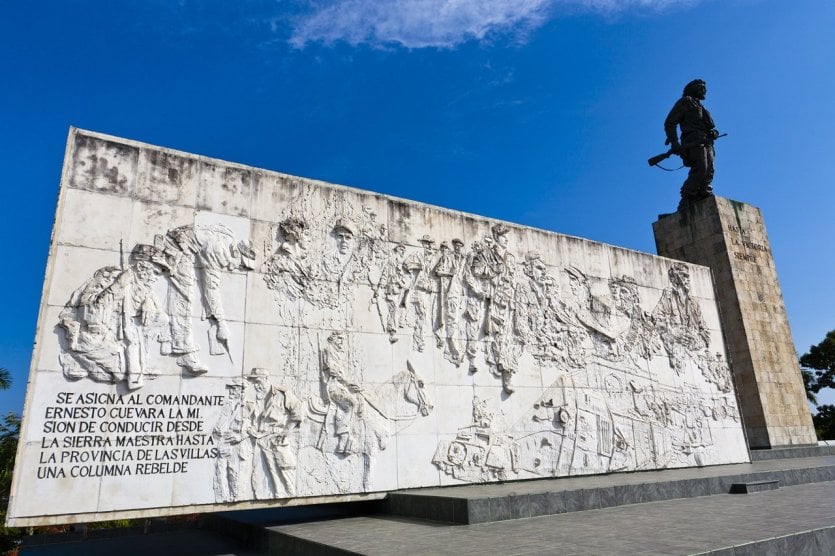
Santa Clara© Flavio Vallenari
The scene of Che Guevara's famous victory, Santa Clara is an important stopover for history buffs. It was at the heart of the Cuban Revolution. Its memorial has been transformed to house the mausoleum of "del Commandante" and his comrades. The adjoining museum displays their personal effects, photos and documents. You can also visit the armored train sent by Batista and foiled by Che's troops. Its carriages have been turned into a museum displaying objects recovered after the battle.
10. Camaguëy
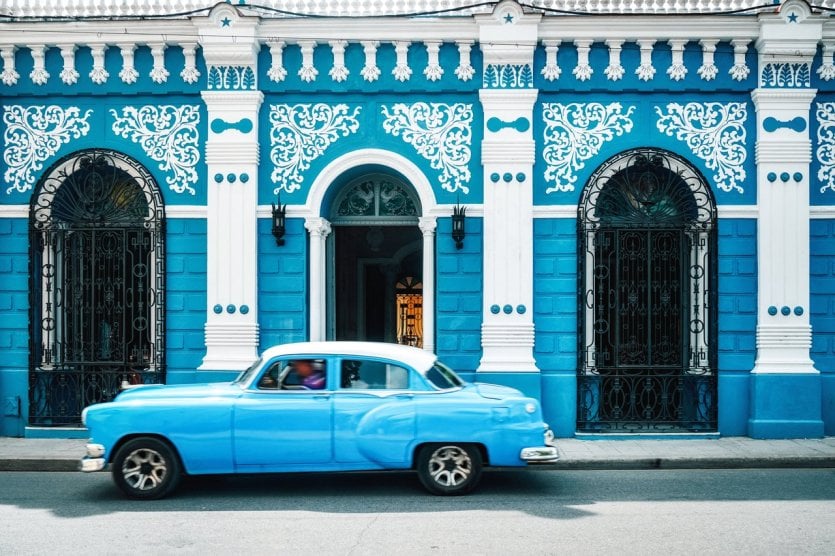
Camaguëy© Nikada
A UNESCO World Heritage site, Camaguëy has a charm all of its own, with its winding streets, colonial mansions and small churches. Its historic center, one of the best preserved, is an invitation to stroll. The farmers' market takes you right to the heart of local life. This is undoubtedly Camaguëy's greatest attraction, as it has remained authentic and untouched by mass tourism. As you visit, you'll notice the many terracotta jars, known as "tinajones", which have become symbols of the town.
The article to read to discover alternatives to mass tourism.
11. Baracoa
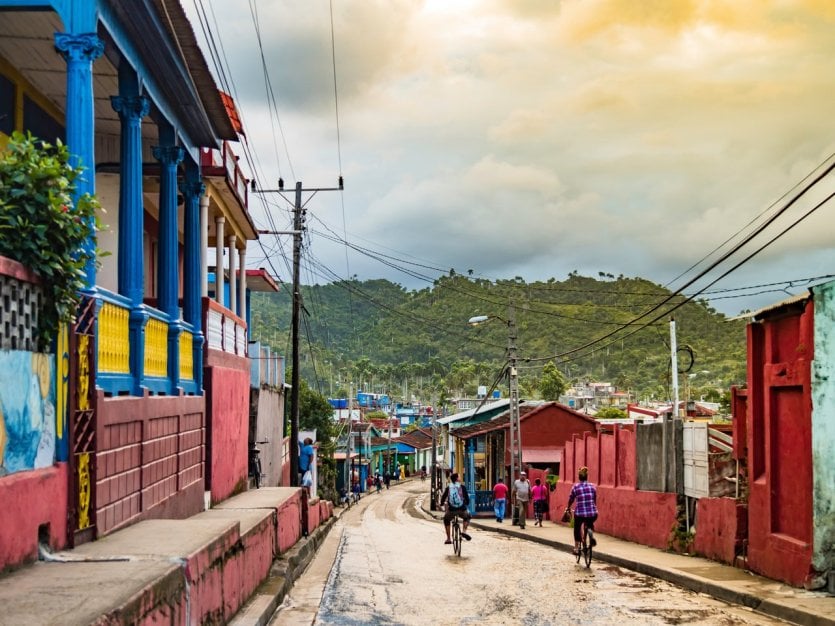
Baracoa© doleesi - Adobe Stock
Located in the far east of Cuba, the charming city of Baracoa is a hidden treasure worth exploring. Surrounded by verdant mountains and tropical forests, this region offers travelers an authentic wilderness experience. Hiking enthusiasts will be delighted by the trails that wind through the landscape. Discover the church of Nuestra Señora de la Asunción, one of the oldest in the country. Baracoa is also renowned for its delicious culinary specialties, notably "Baracoa chocolate".
12. El Malecón
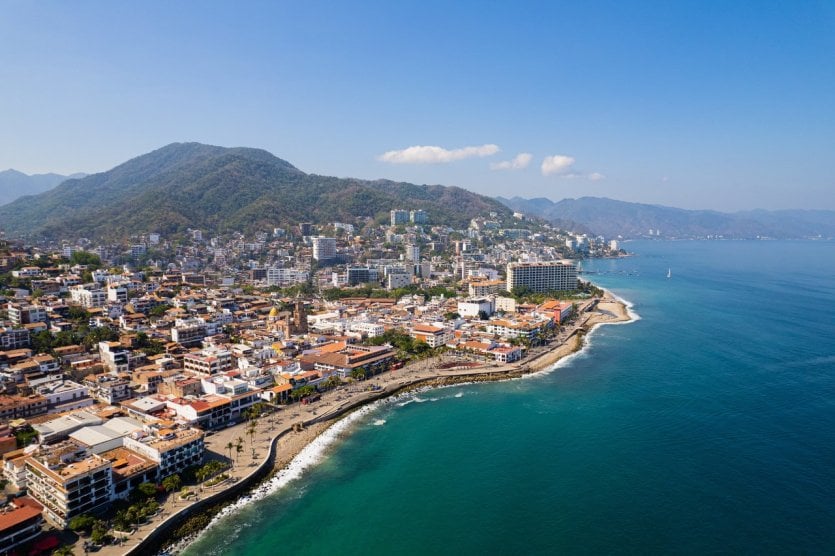
El Malecón© YamileCassandra - Adobe Stock
The Malecón, the emblematic promenade along Havana's coastline, is much more than just an avenue. It's a place for locals and travelers alike to meet, share and escape. Day and night, the Malecón is a hive of activity. Cubans gather here to relax, chat, play music... Take the time to watch the sun set over the horizon. The Malecón is a window onto the soul of Cuba, an experience not to be missed during your stay in Havana.
13. San Pedro de la Roca Fortress
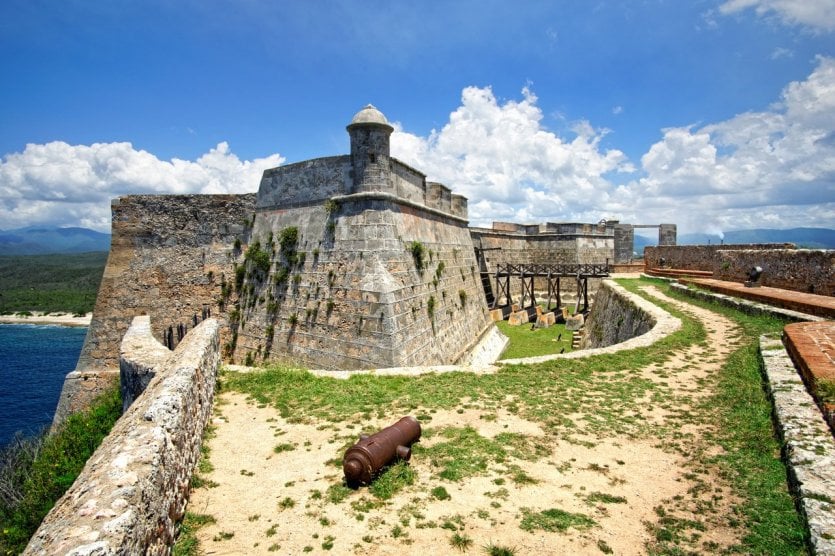
San Pedro de la Roca Fortress© fotobeam - Adobe Stock
Perched on a rocky promontory, the San Pedro de la Roca Fortress is also known as "El Morro". It was built in the 17th century to defend the bay against pirates and foreign attacks. Now a Unesco World Heritage Site, the Fortress of San Pedro de la Roca offers visitors a breathtaking view of the ocean. As you walk along its ramparts, you'll be transported back in time to the battles that shaped Cuba's history. Explore the casemates, cannons and underground galleries. Discover fascinating exhibits on the lives of the soldiers and sailors who served in this strategic location.
14. The El Nicho waterfalls
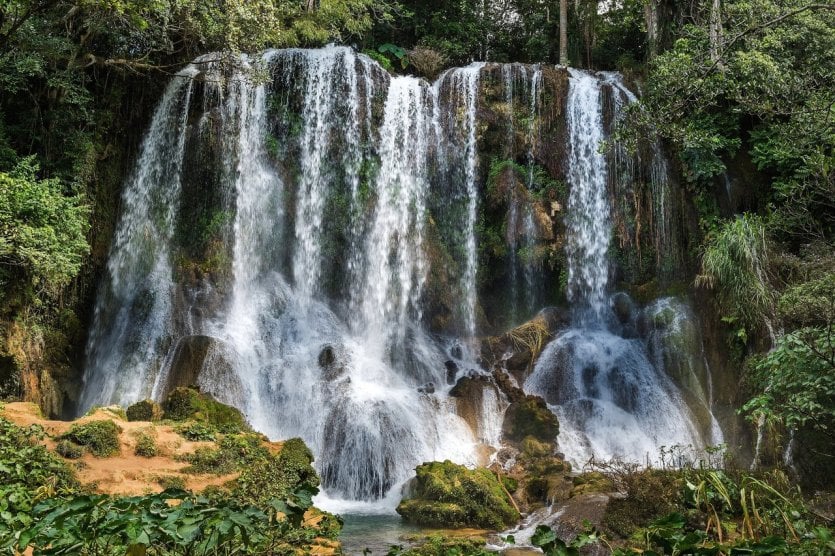
The El Nicho waterfalls© Uryadnikov Sergey - Adobe Stock
Nestled in the heart of the Sierra del Escambray, theEl Nicho waterfalls make a wonderful nature getaway. A must for nature lovers in search of breathtaking scenery. Follow the hiking trails through dense, varied vegetation. Admire the exotic species of plants and birds that live here. When you arrive at your destination, you'll be dazzled by the beauty of the emerald waterfalls tumbling down the cliffs and forming natural pools.
15. Isle of Youth
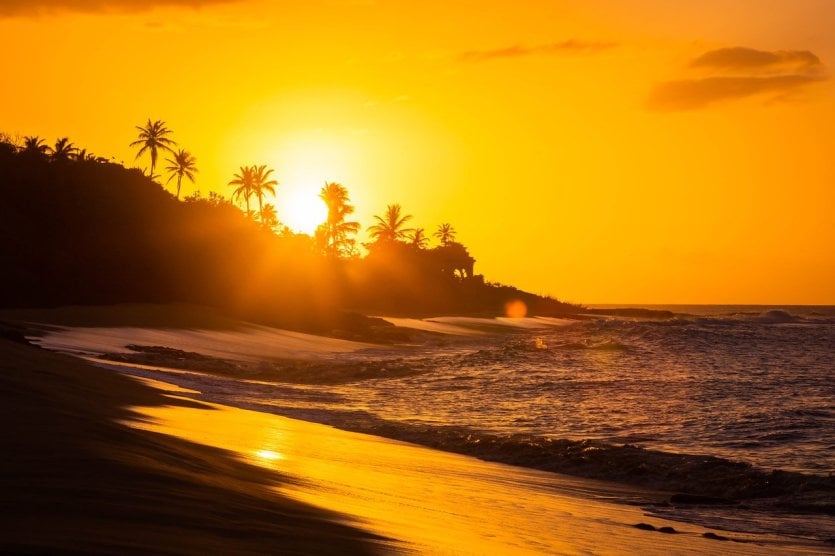
Tropical Island at sunset© PhotoSpirit - Adobe Stock
Located off the southwest coast, Isle de la Jeunesse is perfect for travelers in search of authenticity. Unlike the hustle and bustle of Cuba's big cities, this less touristy island offers pristine beaches, secluded coves and verdant forests. You can explore the island's unspoilt landscapes on foot, by bike or even by scooter, discovering its secret corners and historic sites, which are generally little-visited. Don't miss the famous Cueva de Punta del Este, an impressive sea cave, and the Presidio Modelo, a former prison that housed Fidel Castro in the 1950s.
16.los Ingenios Valley
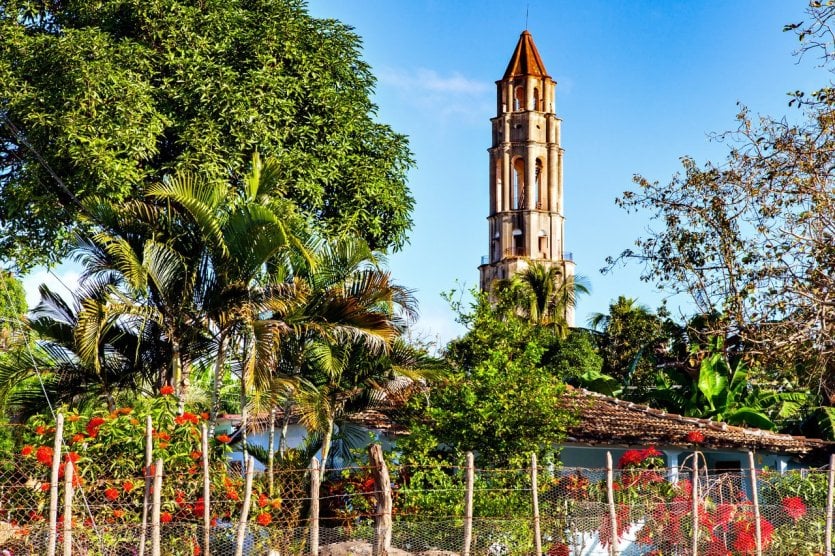
Los Ingenios Valley© Los Ingenios - Adobe Stock
In the province of Sancti Spíritus, the Los Ingenios Valley, a Unesco World Heritage site, bears witness to Cuba's sugar-making past. Once one of the island's most prosperous regions, this valley is still home to the remains of ancient plantations and sugar mills. A visit to this valley will teach you more about the history of slavery and sugar production in Cuba. You can climb to the top of the Manaca Iznaga tower, which offers a breathtaking panoramic view of the fields and mountains.
17 The Plaza de la Catedral
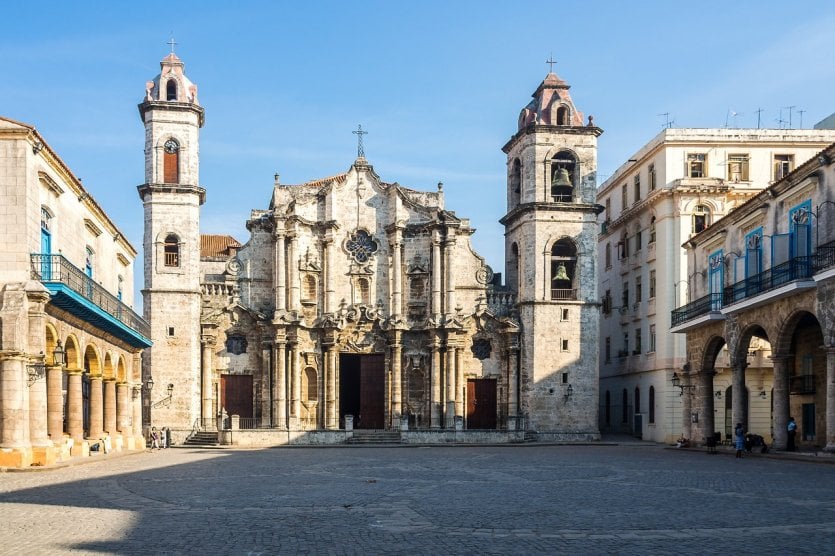
La Plaza de la Catedral© rudiernst - Adobe Stock
At the heart of Havana's historic center, the Plaza de la Catedral is an architectural and cultural gem. Surrounded by colonial buildings, this emblematic square is dominated by the majestic Havana Cathedral, also known as the Cathedral of San Cristóbal. This Baroque work of art, with its richly sculpted façade, is a striking example of 18th-century religious architecture in Cuba. Stroll around the square to admire other historic buildings, including the Palacio del Marqués de Arcos and the Palacio de los Condes de Casa Bayona, which bear witness to the city's past grandeur. The Plaza de la Catedral is also a lively meeting place where you can sip a Cuban coffee in one of the many surrounding cafés while listening to local musicians play.
When is the best time to visit Cuba?
- The dry season (November to April): This is the most popular time to visit Cuba, as the weather is generally dry and pleasant. Temperatures are mild, averaging around 25 to 30°C. It's an ideal time to enjoy beaches, scuba diving and outdoor activities. December to February are often the busiest months, especially for tourists from colder regions.
- Rainy season (May to October): During this period, Cuba experiences more frequent showers and occasional tropical storms. September and October are generally the wettest months and the most prone to hurricanes. However, it's important to note that showers can be short and refreshing, and it's still possible to enjoy the trip despite the occasional downpour. Accommodation and flight prices can be lower during this period, which can be interesting for travelers on a tighter budget.
What tours are there in Cuba?
Cuba offers a wide variety of tours that will allow you to discover the different facets of the island. Here are a few ideas for popular tours in Cuba:
- Classic tour from Havana to Trinidad: This tour allows you to discover Cuba's must-sees. You'll start in Havana, exploring the old town, the Malecón, and soaking up the capital's lively atmosphere. Next, you'll head for the Viñales Valley, famous for its mogotes and tobacco plantations. The tour then moves on to Cienfuegos and Trinidad, two colonial cities full of charm and history. Enjoy the beaches of Varadero before returning to Havana.
- Eastern Cuba tour. This tour takes you to Cuba's less touristy but equally fascinating eastern regions. You'll visit Santiago de Cuba, cradle of Cuban music and revolution, as well as Baracoa, a charming city surrounded by mountains and tropical forests. You can also discover the Isle of Youth, with its secluded beaches and unspoilt nature.
- Western Cuba tour. This tour takes you to the western part of Cuba, less frequented by tourists but rich in history. You'll visit cities like Matanzas, Cienfuegos and Santa Clara, brimming with architectural and cultural treasures. You can also explore the Cienaga de Zapata biosphere reserve and its unique marshy landscapes.
What vaccinations do I need to travel to Cuba?
Before traveling to Cuba, it's advisable to make sure your vaccinations are up to date, and to consult a health professional for medical advice tailored to your personal situation. Here are the vaccinations generally recommended for travelers to Cuba:
- Routine vaccinations. Make sure your routine vaccinations are up to date, especially for diphtheria, tetanus, whooping cough, polio, measles, mumps, rubella and influenza.
- Hepatitis A. Vaccination against hepatitis A is strongly recommended for all travellers to Cuba. This disease can be contracted by consuming contaminated food or water.
- Hepatitis B. Vaccination against hepatitis B is also recommended, especially if you plan to stay for long periods or engage in high-risk activities such as medical care.
- Typhoid. Vaccination against typhoid is recommended, especially if you plan to travel to rural areas.
- Yellow fever. If you are arriving from a country where yellow fever is present, you will need to present a yellow fever vaccination certificate to enter Cuba. Vaccination against yellow fever is not compulsory for travelers from countries where there is no risk of transmission.
What is the typical Cuban dish?
Cuba's most emblematic dish is ropa vieja. This traditional dish, whose name literally means "old rag" in Spanish, is a delicious beef stew simmered with vegetables and spices. To prepare ropa vieja, beef is cooked in a fragrant broth with onions, garlic, peppers, tomatoes and spices such as cumin and bay leaf. Once the meat is tender, it is torn into thin strips, hence the name "ropa vieja". This tasty dish is often served with white rice, black beans and fried plantains. It is much appreciated by Cubans and travelers alike for its delicate flavor.
Book your tickets for Cuba now:


